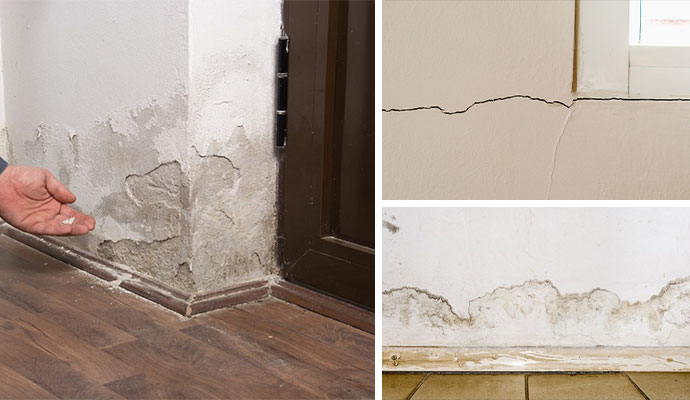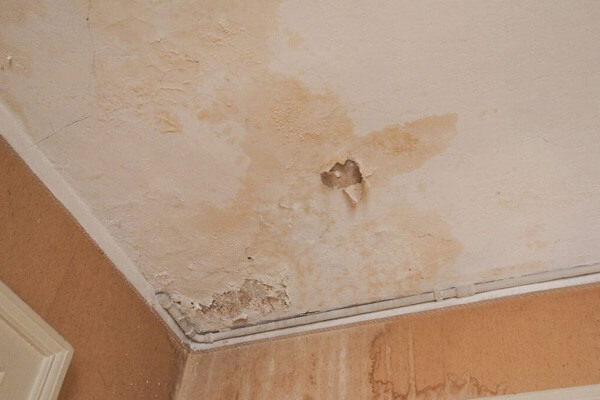The content following next involving How to Remove Water Stains from Walls and Ceilings is definitely captivating. Read it for yourself and see what you think about it.

Water discolorations on wall surfaces are not pleasant to the eyes. Your residence must be without discolorations on the walls, roofing system, or floors. That is the suitable state of a residence as well as its structures. Yet, often it seems nearly unavoidable to experience water discolorations on walls in residences.
Property owners living in damp areas regularly deal with the worry of water spots on wall surfaces. Yet that doesn't have to be the case for you. With all-round and also precise information on the reasons for water discolorations and punctual repair service procedures, you will constantly be an action ahead of such incidents. This write-up assures to be a practical overview for you.
3 Usual Sources Of Water Spots on Wall Surfaces
As opposed to common belief, water stains on walls do not constantly stem from bad structure materials. There are several reasons for water stains on wall surfaces. These consist of:
Poor Drainage
This will protect against water from seeping into the walls. This links to too much moisture that you discover on the walls of your building.
So, the leading source of damp walls, in this case, can be a poor drainage system. It can also be because of poor management of sewage pipelines that run through the building.
Damp
When warm damp air meets completely dry chilly air, it causes water droplets to form on the walls of structures. This happens in bathroom and kitchens when there is heavy steam from food preparation or showers. The water droplets can discolor the surrounding walls in these parts of your home as well as spread to other areas.
Wet or condensation impacts the roofing and wall surfaces of buildings. This creates them to appear darker than various other locations of the home. When the wall surface is wet, it produces a suitable setting for the development of fungi and also germs. These might have adverse results on health and wellness, such as allergic reactions and respiratory system disorders.
Pipe Leaks
The majority of houses have a network of water pipelines within the walls. It constantly increases the stability of such pipelines, as there is little oxygen within the walls.
A disadvantage to this is that water leakage influences the walls of the structure and also triggers extensive damages. An indication of faulty pipes is the appearance of a water tarnish on the wall surface.
Water Discolorations on Wall: Repair Tips
When dealing with water discolorations, house owners would normally desire a fast repair. Yet, they would certainly soon realize this is detrimental as the water spots recur. Right here are a couple of helpful tips that will direct you in the fixing of water discolorations on walls:
Pro Idea
A houseplant in your house additionally increases its moisture. So, if the house is currently damp, you may want to present houseplants with minimal transpiration. An instance of ideal houseplants is succulents.
Conclusion
Although no person intends to have water discolorations on walls in their residence, it can happen to the very best of us. This short article gives you utilize, as you currently recognize exactly how to manage this mishap if it does happen.
It is always best to hire specialist solutions to assist deal with the problems in your home.
Sometimes it seems virtually unpreventable to experience water discolorations on walls in residences.
Contrary to preferred idea, water spots on walls do not always stem from inadequate building products. There are several reasons of water spots on walls. The water beads can tarnish the bordering wall surfaces in these parts of your residence and spread to various other areas.
Here are a couple of helpful suggestions that will certainly guide you in the repair service of water stains on wall surfaces:
How to Remove Water Stains From Your Walls Without Repainting
The easy way to get water stains off walls
Water stains aren’t going to appear on tile; they need a more absorbent surface, which is why they show up on bare walls. Since your walls are probably painted, this presents a problem: How can you wash a wall without damaging it and risk needing to repait the entire room?
According to Igloo Surfaces, you should start gently and only increase the intensity of your cleaning methods if basic remedies don’t get the job done. Start with a simple solution of dish soap and warm water, at a ratio of about one to two. Use a cloth dipped in the mixture to apply the soapy water to your stain. Gently rub it in from the top down, then rinse with plain water and dry thoroughly with a hair dryer on a cool setting.
If that doesn’t work, fill a spray bottle with a mixture of vinegar, lemon juice, and baking soda. Shake it up and spray it on the stain. Leave it for about an hour, then use a damp cloth to rub it away. You may have to repeat this process a few times to get the stain all the way out, so do this when you have time for multiple hour-long soaking intervals.
How to get water stains out of wood
Maybe you have wood paneling or cabinets that are looking grody from water stains too, whether in your kitchen or bathroom. Per Better Homes and Gardens, you have a few options for removing water marks on your wooden surfaces.
You can let mayonnaise sit on your stain overnight, then wipe it away in the morning and polish your wood afterward. You can also mix equal parts vinegar and olive oil and apply to the stain with a cloth, wiping in the direction of the grain until the stain disappears. Afterward, wipe the surface down with a clean, dry cloth. Try placing an iron on a low heat setting over a cloth on top of the stain. Press it down for a few seconds and remove it to see if the stain is letting up, then try again until you’re satisfied. (Be advised that this works best for still-damp stains.) https://lifehacker.com/how-to-remove-water-stains-from-your-walls-without-repa-1849742925

As a keen reader on How to Remove Water Stains from Walls and Ceilings, I think sharing that blog post was a great idea. Loved our post? Please share it. Help others find it. Thank you so much for your time invested reading it.
Plumbing care available.